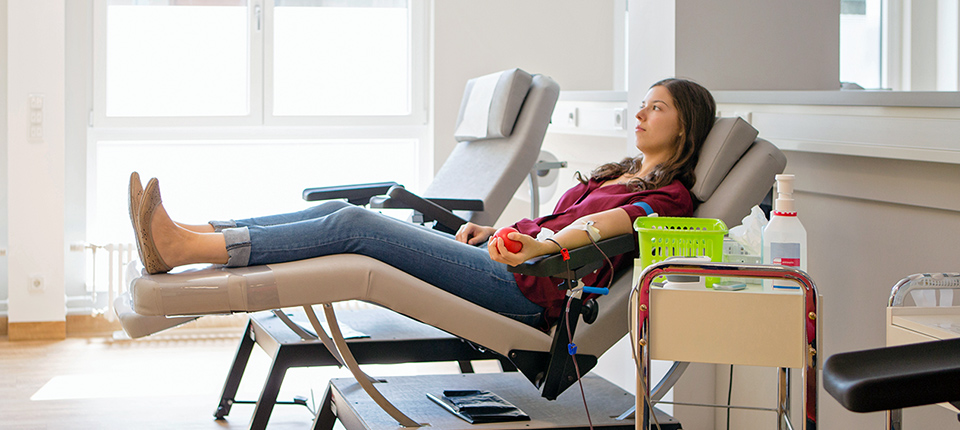
Be the 1, Give Blood
Blood and plasma are needed more than ever. See how you could save lives and help your community.
June 12, 2020
- Copy Link
- Share on X
- Share on Facebook
- Share on Linkedin
Donating blood is selfless. Giving plasma after a COVID-19 infection — sharing the antibodies your body developed to help those who are battling the virus — that's heroic.
As communities continue to grapple with different stages of the coronavirus pandemic, all of us are in unfamiliar territory. While some adjust to communities reopening, others are bracing as their regions tighten restrictions to tackle the novel coronavirus virus that's increasing in parts of the world.
What's true everywhere is that the blood and plasma supply is down.1
Blood donations typically dip during the summer months and holidays, but the pandemic has added extra layers of challenge, mainly:
- Mobile blood collections were canceled globally to prevent the spread of the virus that causes COVID-19.2
- And even more donations are needed now than before the pandemic, because convalescent plasma (plasma containing antibodies to the virus that causes COVID-19) might help people critically ill with the infection, survive.
Blood and plasma centers, already known for their rigorous safety procedures, are taking extra precautions at this time, updating their process to allow social distancing while donating and even extending opening hours at their recruitment centers to provide more options for people to donate throughout the day.
The message from health experts is simple — donate.
"These are turbulent, difficult times. But people can support their communities and their loved ones by donating blood and plasma. It's safe and easy and it's one of the simplest ways that everyone can save a life," said Dr. Alex Carterson, global medical director, Transfusion Medicine, Abbott.
Fast Facts About Donating Blood and Plasma
Whether you're a blood donation regular or a rookie, here are some things you should know:
- According to America's Blood Centers, 80% of all U.S. donations3 come through blood drives. A drop of 350,000 donations is expected due to the cancellation of all mobile blood collection during the COVID-19 pandemic.
- It takes about eight to 10 minutes to donate one pint of blood, which can help up to three people in need4 (Adults have about 10 pints of blood in their bodies).5
- Every two seconds4 someone needs blood in the U.S. Globally, more than 117 million blood donations are made each year.6
- Within about 24 hours, the plasma you donated is replenished.7 (Plasma is the yellow liquid portion of blood in which red and white blood cells and platelets are suspended as they move throughout the body.)
- Abbott screens more than 60% of the world's blood and plasma supply.
Want to Donate?
Select the country you're in to find the nearest blood and plasma donation center and schedule an appointment.
If you have fully recovered from COVID-19, you may be qualified to donate your plasma to help develop potential treatment for COVID-19 and help save lives. Visit covig-19plasmaalliance.org to learn more.
Abbott has been supporting communities worldwide with resources and technologies to fight COVID-19. Learn more about Abbott’s work on COVID-19 testing and the companies’ efforts to tackle the coronavirus.
References
1American Red Cross. American Red Cross Faces Severe Blood Shortage As Coro-na virus Outbreak Threatens Availability of Nation’s Supply
2TIME. Coronavirus Fears Are Leading to Blood Drive Cancellations at 'Unprece-dented' Rates in the U.S.
3American Red Cross. Donation Process Overview.
4American Red Cross. Blood Needs & Blood Supply.
5Community Blood Center. About Blood.
6World Health Organization. Blood Safety and Availability.
7American Red Cross. Blood Donation Process. Frequently Asked Questions.
For the latest on Abbott’s life-changing technology, get updates directly in your inbox.